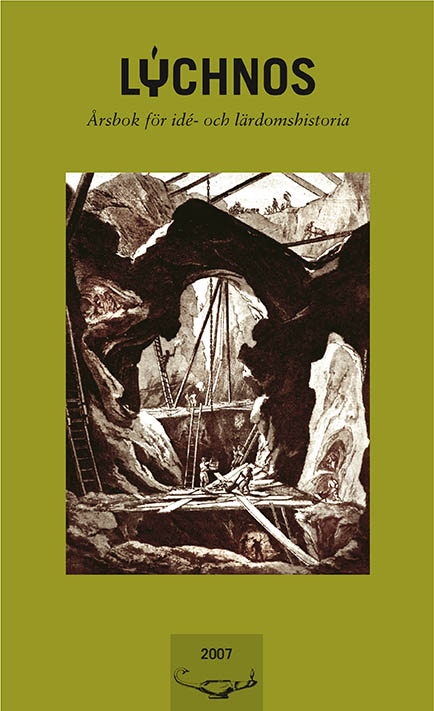On the Periphery of Physics
Eva von Bahr’s Scientific Networks 1909–1914
Abstract
The Swedish physicist Eva von Bahr (1874–1962) was scientifically successful. After getting her Ph. D. at Uppsala University in 1908 she became the first woman to work as an assistant professor in physics in Sweden, albeit not in a paid position. Even so, her scientific work ended in 1914 when she took a position as a school teacher. von Bahr faced many obstacles, e.g. the Swedish constitution, which prohibited women from holding professional positions at the university. Despite this von Bahr managed to work as a physicist for six years.
In this article it is argued that network connections with male scientists enabled her work. Most important for von Bahr was the collaboration with the head of the physics department, Knut Ångström. He gave her a position as a teaching assistant and created other professional opportunities for her. After his death von Bahr decided to move to Berlin where she found a new, extensive network of physicists and participated in several fruitful collaborations. von Bahr also had a friendly relationship with C.W. Oseen, a professor of theoretical physics in Uppsala. This relation did not generate professional openings but provided information on physics research, especially about the budding quantum theories.
From these examples I argue that it was through a merging of institutionally grounded relationships on the one hand and informal connections on the other that von Bahrs set of associations became fruitful. This argument is explored in relation to research on social networks, which has tended to differentiate networks from institutions, professions and other formal structures. A second argument is that von Bahr's position in the scientific structures was gendered. This discussion draws upon work in feminist science studies that has argued the importance of analyzing the peripheries of scientific structures. From this perspective the article elaborates an important point: women like von Bahr were insiders and outsid- ers at the same time. In many ways she acted like an insider: she applied for academic positions and published papers. But she was a woman and therefore constantly an outsider. In the article it is argued that through her position as insider and outsider she lived on the periphery of physics. This position was not fixed; it was rather in constant flux. Her position was a mix between membership and non-membership, between recognition and invisibility.
It is furthermore argued that the case of von Bahr shows the importance of exploring the borderlands of academic science, since they contain a multitude of positions. In focusing on the peripheries of science, history and sociology of science from a gender perspective can give a better account of the multilayeredness of scientific networks. In that way it can move the analysis beyond ”women in science” to contributing to a richer network analysis.
Downloads
Published
Issue
Section
License
This work is licensed under a Creative Commons Attribution 4.0 International License. The copyright for the work published in Lychnos remains with the authors.


